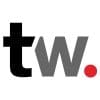
How much money do you need to start forex trading? This is one of the most popular questions among people who are getting started in the industry. In this article, we will look at the minimum amount you need to start trading forex and some of the most popular strategies to use when you have a small account.
Minimum amount to trade forex
Technology and competition have helped to democratize the financial industry. In the past decades, forex trading was a reserve for the big guys like hedge funds and large investment banks. Today, there are hundreds of forex brokers who accept clients from around the world. Some of these companies allow customers to start trading with as little as $25. This, in turn, has drawn millions of day traders.
Therefore, as you can see, there is basically no minimum amount you can trade forex with. However, in reality, people who trade with a relatively small account are often at a substantial risk than those who have a bigger account. For example, if you have a $1000 account and you lose 40%, you will have $600. Making back the $400 you lost will be substantially difficult, as you would have to make over 40% return. On the other hand, if you have a $100,000 account and you lose $400, it will be easier to make up the loss, as it only takes 0.4% gain to hit back the loss .
Still, it is possible to trade successfully for long with a small account. I am a good testimony to that since I started my trading career with less than $1,000. So, let us look at some of the top strategies to use when you have a small account. In this case, we will be considering an account with less than $500.
An affordable forex broker
First, you need to do a lot of work to find a good forex broker who is relatively affordable. As you will find out, many brokers advertise their services as free because they do not charge a commission for their trades. These companies charge no commission because they make money using spreads. A spread refers to the difference between the bid and ask price of currency pairs.
Therefore, it is important that you consider the spread charged by forex brokers so that you can get a cheaper one. While many of these firms list their spreads on their website, these numbers are not always accurate. We suggest that you look at the real spreads they offer in the market. You can do this by creating a demo account and downloading their MT4/5 software. You can then look at the spread in the Marketwatch section.
Looking at the spreads will help you select a good broker who is relatively affordable. As a result, you will be saving money from the word go. Also, look at their swap fees and whether they have account management fees. Most importantly, to reduce your trading costs, embrace majors like the EUR/USD and GBP/USD that have low spreads.
Use of leverage
The next thing you need to do when trading with a small account is to take advantage of leverage. For starters, leverage refers to the cash or loan advanced to a trader to maximize their risk exposure. This leverage ranges from 1:2 to 1:2000, depending on the broker.
In the past few years, many regulators have been extra rigorous about leverage because of the risks it poses to traders. For example, the Eurozone has adopted the Markets in Financial Instruments Directive II (MIFID II) regulations. One part of the rules was that forex brokers needed to reduce their maximum leverage to 1:30. Two years later, the Australian Securities and Investments Commission (ASIC) adopted similar regulations.
Still, these regulations only apply to people in the Eurozone and Australia. As such, if you are in another country, some brokers offer almost unlimited leverage.
While leverage is a good thing, it also exposes you to some significant risks. For one, since a loan can make you a lot of money when things go right, it also means that it can lead to more risks when things go wrong. Therefore, when you have a small trading account, we recommend that you use a relatively small size of leverage. In most cases, start with a leverage of less than 1:30 and then increase it gradually.
Lot sizes
Position sizing is an important concept that all traders should be aware of. It applies to all traders including those with large accounts. As a trader with an account less than $500, we recommend that you start with lot sizes of less than 0.5. Like leverage, trading with small lot sizes will not make you a lot of money. However, it will help you avoid losing a substantial amount of money when things go wrong. You should then increase the lot sizes as you gain more experience.
Risk management
The next important concept when trading with a small account is known as risk management. This is the practice of minimizing risks when trading. There are several strategies you can embrace in risk management. First, you should embrace the so-called 2% rule. This is where you ensure that no trade exposes you to a 2% risk. If you have a $500 account, you should ensure that no trade exposes you to a $10 loss. You can manage this by using proper lot sizes and leverage.
Second, you should embrace stop-loss and take-profits. A stop-loss will automatically stop your trade when it reaches a certain loss threshold, while a take-profit will stop it at your ideal profit zone. These stops will help to cushion you in case of market volatility.
Summary
There are other strategies you should use when you have a small account. For example, you can embrace the concept of social or copy trading. This is where you copy trades from other experienced traders. This is done automatically using tools provided by several brokers like eToro.
Also, when using a stop-loss, you should do whatever you can to avoid moving the order further when the market is going towards it. This is a common mistake where traders extend the stop-loss, hoping that the price will recover.








Leave a Reply